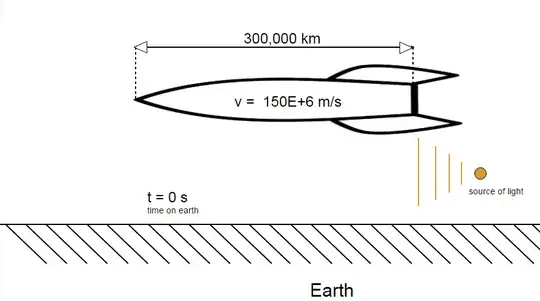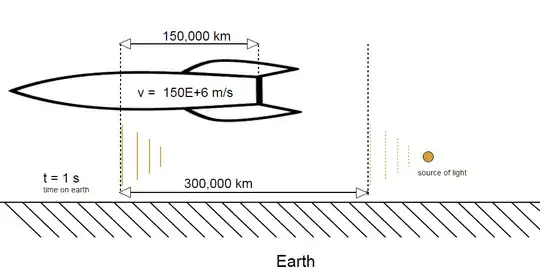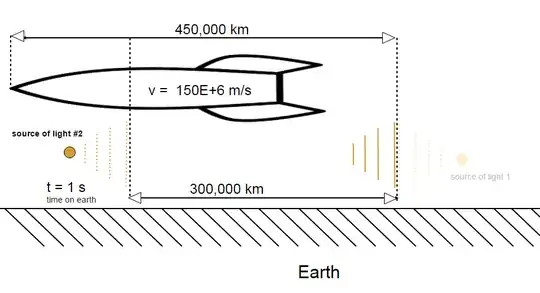First of all, I saw few similar questions here but most of them address the question of why, when I want to address a question of HOW. Also one question is addressing the same problem but I find it's formulation rather complicated and this makes it difficult to understand the question and answers. When the problem can be described and visualized in much simple way:
Let's consider a spaceship floating under the Earth. There is a source of light and at time 0s the light will reach some point on Earth and the end of spaceship:
 Then, after 1 second have passed on Earth, we will see the following picture:
Then, after 1 second have passed on Earth, we will see the following picture:

As we can see, relatively to the Earth the light have made a distance of 300,000 km in 1 second. But relatively to the spaceship the distance is half of that. When explaining how this can happen, usually they say that clock on the rocket will tick slower so speed calculated by folks on the spaceship is the same.
And it sounds believable until you imagine an other source of the light from an other end of the scene:
 In this case by the same time the light from an other source have made a distance of 450,000 km. So if we use the same time as we did in previous case, the speed must be different.
In this case by the same time the light from an other source have made a distance of 450,000 km. So if we use the same time as we did in previous case, the speed must be different.
So how can you imagine\describe the same speed for light from both sources and for both reference frames?